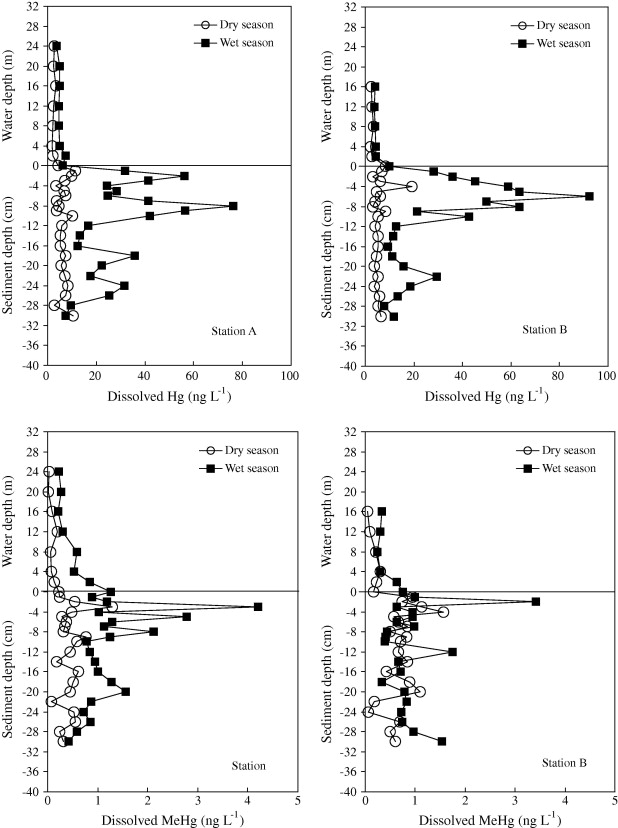
Fig. 7. The distributions of dissolved inorganic Hg (IHg) and dissolved MeHg in the water column and sediment porewater of Aha Reservoir
Two sampling campaigns were carried out in March and August 2005 representing dry and wet seasons, respectively, to investigate the distribution patterns of Hg species in the water column and sediment profiles at two sampling stations in Aha Reservoir located in Guiyang, Southwestern China. Aha Reservoir has been contaminated by Hg due to small scale coal mining activities. Mercury concentrations in both water and sediment were elevated.
A clearly seasonal variation of dissolved Hg (DHg), particulate Hg (PHg) and total Hg (THg) concentrations in the water column was observed. The concentrations of these Hg species in the wet season were significantly higher than in the dry season. Runoff input and diffusion of Hg from sediments could be the reasons for elevated concentrations of these Hg species in the wet season. The contaminated sediment is acting as a secondary contamination source for both inorganic Hg (IHg) and methylmercury (MeHg) to the overlying water. The cycling of Mn in the sediment governs the diffusion process of Dig to the water column. In the dry season (winter and spring), Mn occurs as MnO2 because the uppermost part of sediment is in an oxic condition and Hg ions are absorbed by MnO2. In the wet season (summer and fall), the uppermost part of the sediment profile is in a reduced condition because of stratification of the water column and MnO2 is reduced to Mn2+, which results in transformation of Hg2+ into porewater as Mn2+ became soluble. This causes a higher diffusive Lux of IHg from sediment to overlying water in the wet season. Both sampling stations showed a consistent trend that THg concentrations decreased in the uppermost part of sediment cores. This demonstrated that the measures taken to reduce ADM contamination to Aha Reservoir also reduced Hg input to the reservoir. Methyl Hg diffusive fluxes from sediment to overlying water were higher in the wet season than the dry season demonstrating that high temperatures favor Hg methylation processes in sediment. (C) 2010 Elsevier Ltd. All rights reserved.
| Publication name |
APPLIED GEOCHEMISTRY Volume: 26 Issue: 2 Pages: 213-221 Published: FEB 2011 |
| Author(s) |
Feng, Xinbin; Bai, Weiyang; Shang, Lihai; He, Tianrong; Qiu, Guangle; Yan, Haiyu |
| Corresponding author |
FENG Xinbin
fengxinbin@vip.skleg.cn
Chinese Acad Sci, Inst Geochem, State Key Lab Environm Geochem, Guiyang 550002, Peoples R China |